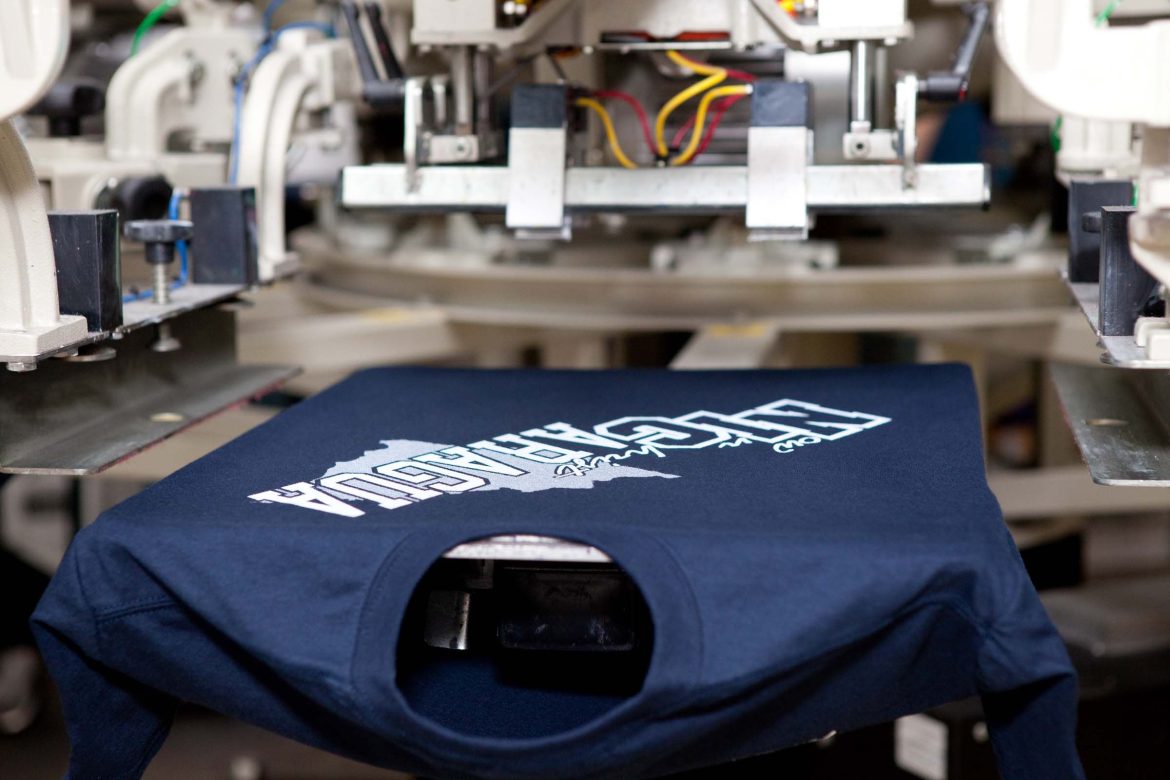Direct-to-garment (DTG) printing is a modern method of printing custom designs directly onto garments, such as t-shirts, using specialized inkjet technology. This technique allows for high-resolution, full-color prints with intricate details, making it a popular choice for custom apparel. In this article, we will explore the process of DTG printing near me, its advantages and disadvantages, and its applications, especially in the context of custom t-shirt production.
Understanding DTG Printing
The Process
- Design Creation
- Digital Artwork: The process begins with creating or selecting a digital design. This design can be anything from a simple logo or text to a complex, full-color image. Designers use software such as Adobe Photoshop, Illustrator, or other graphic design tools to create high-resolution artwork.
- Preparation
- Pre-Treatment: Before printing, the garment must be pre-treated with a special solution. This solution helps the ink adhere to the fabric and enhances the vibrancy and durability of the print. The pre-treatment is usually applied using a pre-treatment machine or manually with a spray gun, followed by a heat press to cure the solution.
- Printing
- Inkjet Technology: The garment is then loaded into the DTG printer. The printer uses inkjet technology to apply the design directly onto the fabric. Unlike screen printing, which requires separate screens for each color, DTG printers can print full-color designs in a single pass. This is achieved using a combination of CMYK (cyan, magenta, yellow, and black) inks.
- Curing
- Heat Setting: After printing, the garment needs to be heat-cured to set the ink. It is done by the use of a heat press dryer. The curing process ensures that the ink bonds with the fabric, making the print durable and wash-resistant.
Advantages of DTG Printing
High-Resolution Prints
- Detail and Clarity: DTG printing excels at producing high-resolution prints with fine details and vibrant colors. It can accurately reproduce complex designs, photographs, and gradients that would be challenging to achieve with traditional screen printing.
No Minimum Order Requirements
- Cost-Effective for Small Runs: Unlike screen printing, which requires a setup process for each design, DTG printing does not have minimum order requirements. This makes it ideal for small batches, one-off custom shirts, and on-demand printing services.
Versatility in Design
- Full-Color Capability: DTG printers can handle a wide range of colors and gradients, allowing for intricate and colorful designs without the need for color separation or additional setup costs.
Eco-Friendly
- Water-Based Inks: Most DTG printers use water-based inks, which are generally more environmentally friendly than the plastisol inks used in screen printing. Additionally, the absence of screens and minimal waste of ink make DTG a more sustainable option.
Disadvantages of DTG Printing
Fabric Limitations
- Best on Cotton: DTG printing works best on 100% cotton or high-cotton-blend fabrics. While it is possible to print on other materials, such as polyester, the quality and durability of the print may be compromised.
Slower Production Speeds
- Time-Consuming for Large Orders: DTG printing can be slower compared to screen printing, especially for large orders. Each shirt must be printed individually, which can be time-consuming for bulk production.
Higher Cost for Large Runs
- Not Economical for Bulk Orders: For large quantities, DTG printing can be more expensive than screen printing due to the per-shirt cost. If the order increases the screen printing becomes more cost effective.
Applications of DTG Printing
Custom Apparel Businesses
- Print-On-Demand: DTG printing is ideal for print-on-demand businesses, where customers can order custom designs, and the shirts are printed and shipped directly to them. This model reduces inventory costs and allows for a wide range of designs.
Personalized Gifts
- Unique Gifts: Custom DTG printing is perfect for creating personalized gifts such as birthday shirts, anniversary presents, and special occasion apparel. The ability to print one-off designs makes it easy to create unique and meaningful items.
Small Businesses and Startups
- Low Initial Investment: For small businesses and startups, DTG printing offers a low-cost entry point into the custom apparel market. Without the need for large initial orders, businesses can experiment with different designs and gauge customer interest before committing to larger production runs.
Events and Promotions
- Custom Merchandise: DTG printing is also popular for creating custom merchandise for events, promotions, and corporate giveaways. Companies can print limited edition shirts for specific events or marketing campaigns without the risk of overproduction.
DTG Printing in Practice
Setting Up a DTG Printing Operation
- Choosing the Right Equipment
- DTG Printers: Selecting the right DTG printer is crucial. Factors to consider include print quality, speed, ease of use, and the availability of technical support. Popular DTG printer brands include Epson, Brother, and Kornit.
- Workspace and Ventilation
- Workspace: A clean, well-ventilated workspace is essential for DTG printing. Adequate space is needed for the printer, pre-treatment area, and curing equipment. Proper ventilation helps manage fumes from the pre-treatment solution and curing process.
- Training and Maintenance
- Training: Proper training for operating the DTG printer and handling the pre-treatment and curing processes is essential. Manufacturers often provide training resources and support.
- Maintenance: Regular maintenance of the printer, including cleaning print heads and checking ink levels, ensures consistent print quality and extends the life of the equipment.
Creating High-Quality Prints
- Artwork Preparation
- High Resolution: Ensure the artwork is high resolution (at least 300 DPI) to achieve sharp and clear prints.
- Color Management: Use color management tools to ensure the colors in the digital design match the printed result.
- Pre-Treatment Application
- Consistency: Apply the pre-treatment solution evenly to ensure the best print quality and durability. Uneven application can result in inconsistent prints.
- Printing and Curing
- Test Prints: Conduct test prints to fine-tune settings and ensure the best results. Adjust the printer settings as needed to achieve the desired print quality.
- Proper Curing: Follow the recommended curing times and temperatures to ensure the print sets correctly and is wash-resistant.
Conclusion
Custom DTG printing on shirts offers a versatile and high-quality solution for creating unique, personalized apparel. Its ability to produce detailed, full-color designs with no minimum order requirements makes it an attractive option for small businesses, startups, and individuals looking to create custom garments. While it may have some limitations in terms of fabric compatibility and production speed, the advantages of DTG printing make it a valuable tool in the custom apparel industry. By understanding the process, investing in the right equipment, and following best practices, you can achieve excellent results and bring your creative designs to life.




